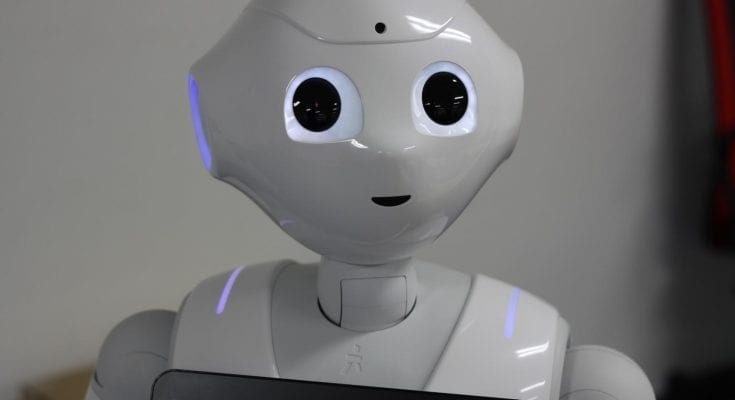The current progress in the fields of science and technology has resulted in vast new fields, approaches and amenities. The Artificial Intelligence is one of the leading profession and is covering all areas of life in bringing revolutions. Here in this article, I am going to discuss 2 approaches of AI in the field of health care. I have highlighted the advantages and disadvantages of Artificial intelligence in modern health care profession.
Artificial Intelligence relies on two kinds of approaches:
The symbolic approach: Based on logic, it uses reasoning from rules.
It consists of the use of “expert systems”, which operate autonomously or in interaction, by imitating the cognitive mechanisms of a human expert in order to produce logical reasoning, and are based on data models representing a set of concepts in a specific field and the relationships they have between them to make their analysis.
This approach requires knowledge modeling work in the field (description and reasoning).
For this approach, 360Digitmg has formulated specific Data Science Course in Bangalore in India that covers all the aspects of AI and Data Science.
The advantage of the symbolic approach is that it is possible to follow the path of reasoning. On the other hand, machines produce an infinite amount of micro reasoning, which is impossible to analyze, as is, which is why researchers are working on a system for classifying the different stages of reasoning.
The digital approach based on data from experience, it uses analysis by numerical algorithms or textual excavations to extract knowledge.
It does not use any pre-established template.
The downside of this approach is that there is no traceable reasoning because the decisions of the algorithm cannot be analyzed. This poses an ethical problem as to the responsibility of the medical decision based on this approach.
The challenge for the future is to find a way to combine these approaches, so as to be able to benefit both from the reasoning of one and its traceability, and from the performance of the other.
Two schools of thought in the face of Artificial Intelligence:
AI researchers are divided into two streams, with different goals:
Supporters of “strong” AI:
Their goal is to create a robot that is endowed with intelligence and reasoning skills similar to those of humans. The risk however, with this kind of conceptions, would be to create a machine superior to man, with its own consciousness, which one could no longer control.
Supporters of “weak” Artificial Intelligence:
Their goal is to create machines that simply help humans in various tasks. It is the most exploited current. The creation of systems is of variable complexity but they are robots limited in their capacities: it is man who programs which tasks they can accomplish, to which tasks they can adapt, they are not autonomous in their adaptation.
The current challenges of AI research are to put in place a better structure and better data protection, but also to obtain better performance and greater transparency of the systems.
AI applied to medical science:
Artificial Intelligence is now involved in various fields of medicine:
Predictive medicine, by making it possible to anticipate a disease and its evolution
Precision medicine, by helping the recommendation of personalized treatments
Precision medicine, by helping the recommendation of personalized treatments
Decision support, by advising on the diagnosis
The company, with the possibility for elderly or dependent people to have a companion robot
Computer-assisted surgery, allowing precision or remote operations
Prevention, by predicting epidemics and acting on pharmaceutical vigilance
Robotics, a subfield of AI widely used in medicine:
Robotics is about equipping robots with the skills of reasoning, decision and action, and constantly increasing their capacities through research.
Robotics, in medicine, finds many opportunities that are already and will significantly advance the performance of care:
Computer-assisted surgery, for example, is the most well-known application of medical robotics: it allows the surgeon to be more precise in his gestures or to perform operations remotely.
Another aspect of this AI subfield is the creation of smart prostheses: smart prostheses repair the human body by increasingly mimicking the real elements they replace.
Another well-known and rather controversial aspect of robotics is personal assistance robots: they are able to imitate humans and their interactions, which can prove extremely practical in the case of the elderly, lonely or dependent. , but also poses an ethical problem, not only in terms of data protection but above all in the sense that it is easy for humans to get lost in the border between the real and the virtual.
Artificial Intelligence applied to medical science, an attractive business opportunity
We are witnessing a regular emergence in United states and India of start-ups specializing in the field of AI applied to health: for research concerning certain pathologies, assistance with diagnosis or in the operating room, for example.
As research is still in its infancy and offering vast perspectives, the field of possibilities has almost no limit … apart from US regulations, particularly in terms of data protection, which does not allow tracing data from a single patient in different places and over time, which somewhat blocks progress. This is why these same Indians start-ups are increasingly starting to export to the United States, where they benefit from better access to medical data.
The limits of Artificial Intelligence in the field of health
With AI, the possibilities are vast and you must therefore be able to pay attention to structure, trace and protect.
One of the current limitations is that, although medical databases are huge, the data was not originally collected for being analyzed by robots, and reading it is therefore sometimes complicated. For software and can be a source of misunderstandings or errors: this is a point on which we must be vigilant.
In addition, the legislation concerning data protection continues to strengthen in France, it is necessary to be able to remain always in conformity.
Finally, one of the limits of AI applied to medicine consists precisely in setting limits: it is necessary to be able to assist the doctor in his tasks to offer him more speed, more precision, choicer, but it is necessary that he can remain autonomous in the face of the machine and its decisions. The machine cannot replace the doctor, human intervention is ethically essential and the operation of systems must be transparent, explainable and traceable.
At Mutest, we also try to be always at the forefront of technology with very soon an innovative member area on our site where you will be able to have access to all your documents and reimbursements, electronically sign, simulate your reimbursements etc., and already now the possibility of requesting a quote as well as an online membership request.
FAQ
How does AI work?
The symbolic approach: Based on logic, it uses reasoning from rules. It consists of the use of “expert systems”, which operate autonomously or in interaction, by imitating the cognitive mechanisms of a human expert in order to produce logical reasoning, and are based on data models representing a set of concepts in a specific field and the relationships they have between them to make their analysis.
How does a personal assistant robot work?
Another well-known and rather controversial aspect of robotics is personal assistance robots: they are able to imitate humans and their interactions, which can prove extremely practical in the case of the elderly, lonely or dependent. , but also poses an ethical problem, not only in terms of data protection but above all in the sense that it is easy for humans to get lost in the border between the real and the virtual.
Additional Resources:



